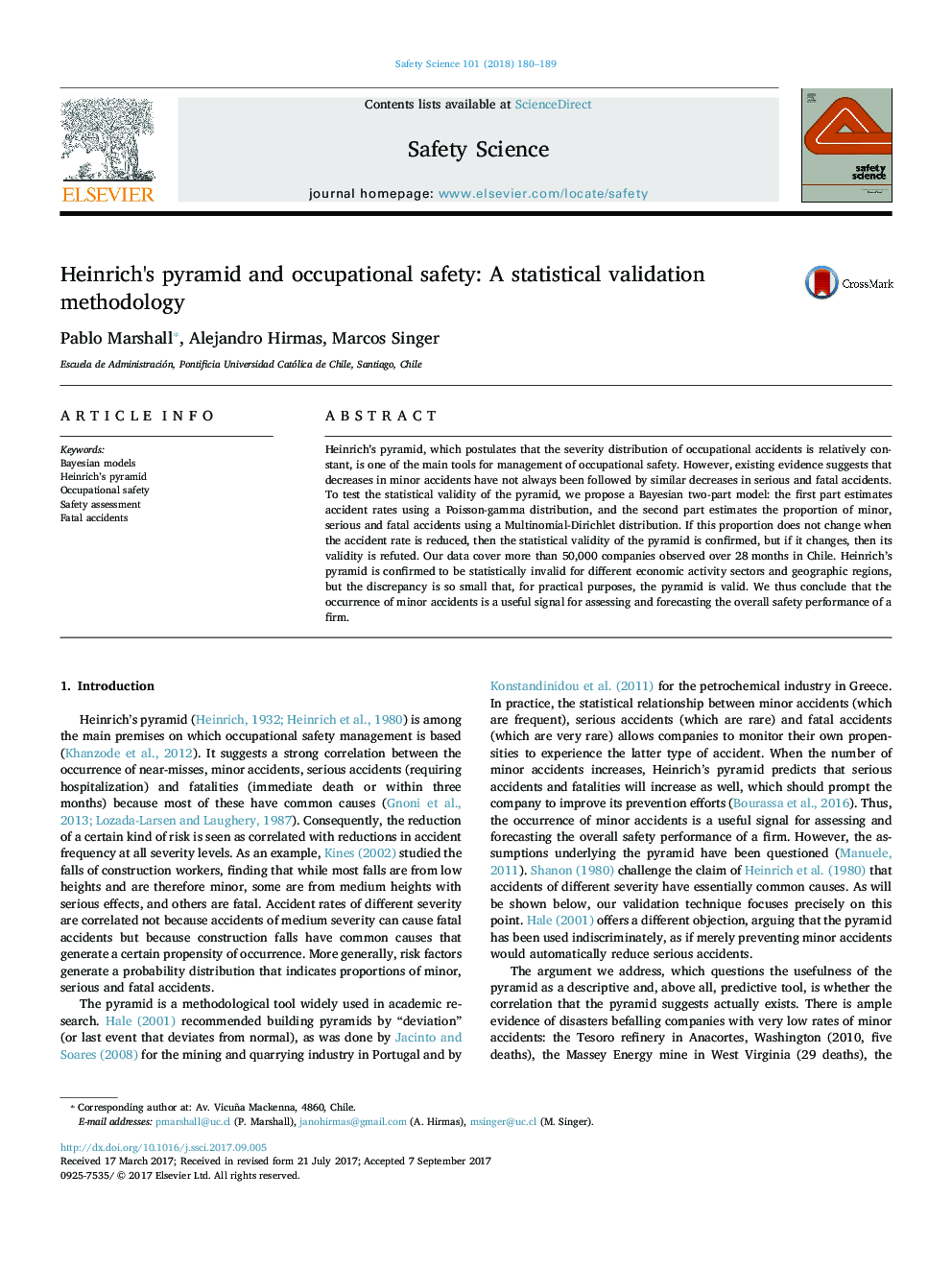| Article ID | Journal | Published Year | Pages | File Type |
|---|---|---|---|---|
| 4981083 | Safety Science | 2018 | 10 Pages |
â¢The paper test the statistical validity of the Heinrich's pyramid.â¢A Bayesian two-part specification, Poisson- gamma and Multinomial-Dirichlet, is proposed.â¢A database of more than 50,000 economic units over 28 months in Chile is analyzed.â¢Heinrich's pyramid is confirmed to be statistically invalid for different economic activity sectors and geographic regions, but the discrepancy is so small that, for practical purposes, the pyramid is valid.
Heinrich's pyramid, which postulates that the severity distribution of occupational accidents is relatively constant, is one of the main tools for management of occupational safety. However, existing evidence suggests that decreases in minor accidents have not always been followed by similar decreases in serious and fatal accidents. To test the statistical validity of the pyramid, we propose a Bayesian two-part model: the first part estimates accident rates using a Poisson-gamma distribution, and the second part estimates the proportion of minor, serious and fatal accidents using a Multinomial-Dirichlet distribution. If this proportion does not change when the accident rate is reduced, then the statistical validity of the pyramid is confirmed, but if it changes, then its validity is refuted. Our data cover more than 50,000 companies observed over 28Â months in Chile. Heinrich's pyramid is confirmed to be statistically invalid for different economic activity sectors and geographic regions, but the discrepancy is so small that, for practical purposes, the pyramid is valid. We thus conclude that the occurrence of minor accidents is a useful signal for assessing and forecasting the overall safety performance of a firm.
